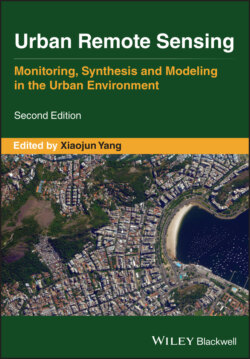Читать книгу Urban Remote Sensing - Группа авторов - Страница 39
2.4.3 RADAR FOR BUILT‐UP VOLUME: IMPLICATIONS
ОглавлениеExcitingly, spaceborne radar‐based approaches introduce a potential paradigm shift within the urban remote sensing community because of the ability to liberate remote sensing scientists and their analyses from the constraints of 2D, and do so with use of readily available, free data (unlike most airborne lidar data). Balk et al. (2019) even demonstrated that DSM data can actually capture socioeconomic characteristics, patterns, and status along the decadal urbanization trend of the Great Saigon (including the mega Hồ Chí Minh City), while 2D methods from satellite images may be insensitive to or even misrepresent socioeconomic change due to urbanization.
Realistically, the SeaWinds DSM approach provides moderate‐resolution data products (1 km pixels) only for the years 2000–2009 when QuikSCAT was operating. The scatterometer record can be extended with international satellite scatterometer data; however, a major issue is whether the data can be fully calibrated and made freely available. On the other hand, spaceborne radar data with spatial resolutions several orders of magnitude higher than that of a scatterometer, likely provided only by SAR systems, have potential to revolutionize urban built‐up analyses. Even with the availability of spaceborne lidar data from ICESat‐2 (Moussavi et al. 2014), GEDI (Qi and Dubayah 2016), and Sentinel 3 (ESA 2019), scientists may not have long‐term data records or high enough spatial resolution for intra‐urban analyses, which can be provided by the many SAR platforms now in operation, previously operated, or planned for the future.
